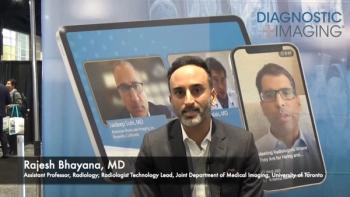
Low-dose CT for Lung Cancer Screening Should Be Expanded
CHICAGO - Widespread adoption of low-dose CT for lung screening may be more effective at catching early-stage lung cancer.
CHICAGO - Widespread adoption of low-dose CT for lung screening may be more effective at catching early-stage lung cancer.
Lung cancers are aggressive, and treatment at an advanced stage can be challenging. While diagnosing lung cancer early is considered the key to effective treatment, the high cost of screening means fewer patients are eligible for early detection. For high-risk patients, low-dose CT scans may play a role in making screenings more accessible, said Caroline Chiles, speaking at a session at RSNA 2013.
“I think that we are on the cusp of changing screening for lung cancer,” Chiles said. “We have enough evidence to show that LDCT [for] lung cancer screening in 2013 is a good starting point,” Chiles said. “It is a preventative health intervention that is cost effective.”
Out of the 43.4 million current smokers and 47.3 million former smokers in the U.S., many are not eligible for lung cancer screening under current programs, said Chiles, a professor in the Department of Radiology at Wake Forest University Baptist Medical Center. She said this eligibility conundrum stems from the current procedure's high cost for late-stage lung cancer screening - $142,750 per patient. Low-Dose CT scans, on the other hand, are estimated to cost about $68,000 per quality-adjusted life year.
Early-stage lung cancer accounted for about half of the cancers detected by CT scans in a two-year study period, according to a U.S. study funded in part by the National Lung Screening Trial. In contrast, only 24 percent of the cancers detected by chest X-rays were early stage. “The better we understand lung cancer screening, the more we can estimate its costs,” she said.
But to identify more early-stage, localized lung cancer, the current eligibility requirements for lung cancer screening need to change, Chiles said. The odds of surviving lung cancer are better if the cancer is detected earlier, before it has spread to lymph nodes or distant sites. In 2013, 57 percent of patients screened were found to have late stage lung cancer, which revealed a systematic screening problem.
“The goal of lung cancer screening is to shift that 57 percent of patients to a more localized version of the disease,” Chiles said. “We want to close the gap between cases diagnosed and deaths.”
Newsletter
Stay at the forefront of radiology with the Diagnostic Imaging newsletter, delivering the latest news, clinical insights, and imaging advancements for today’s radiologists.




























